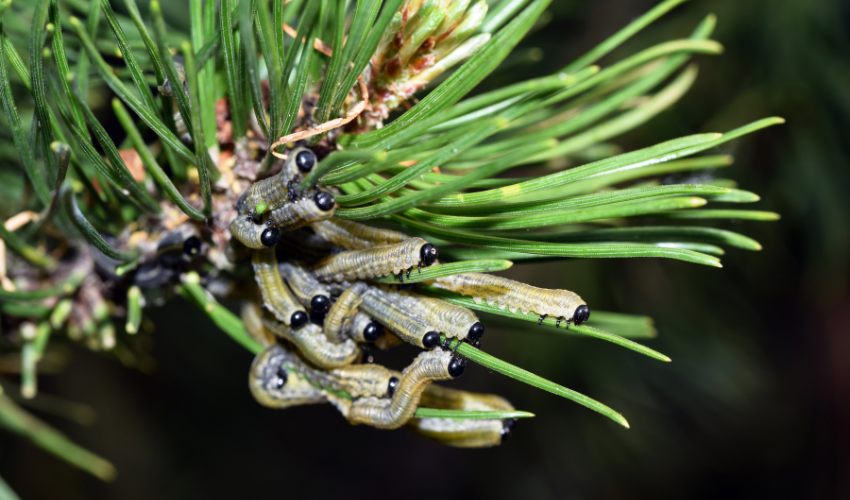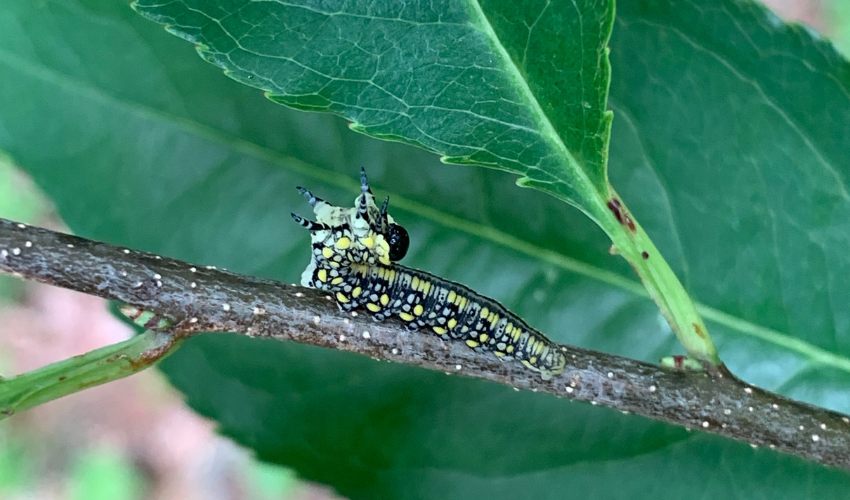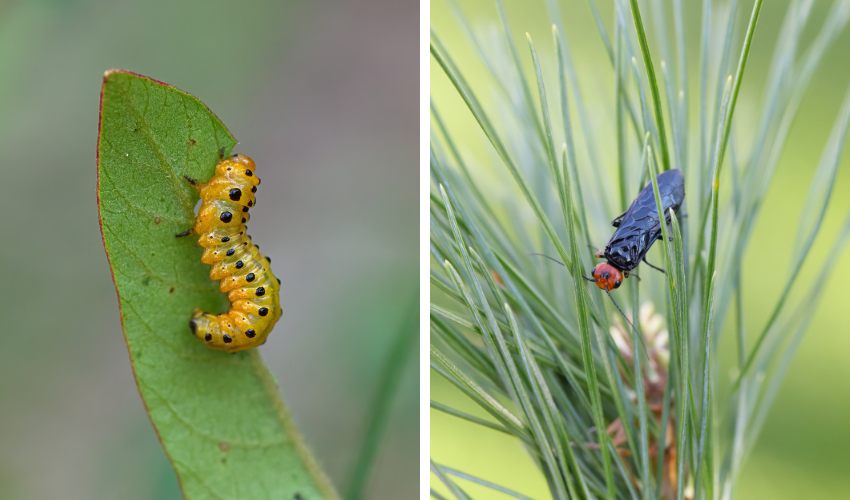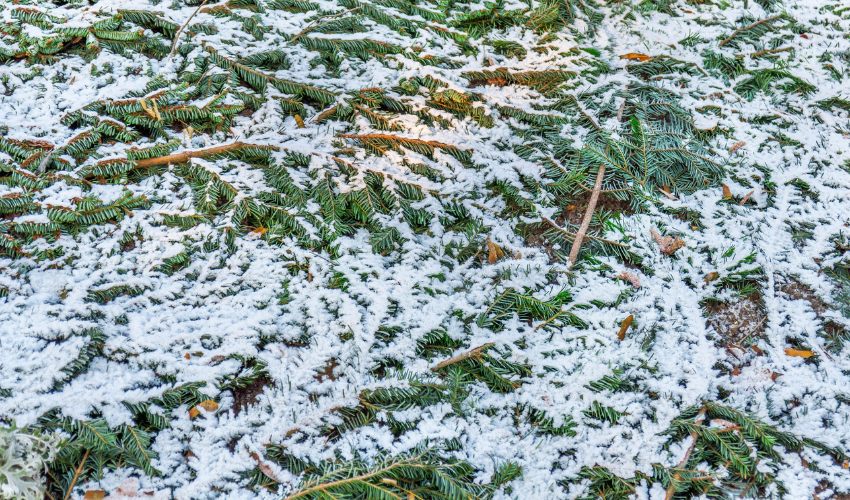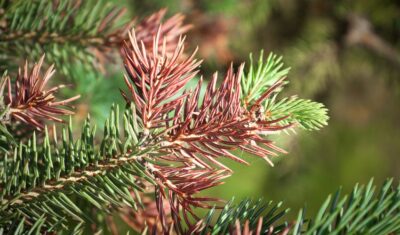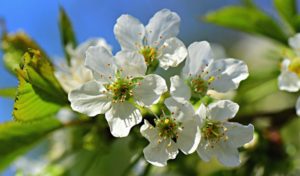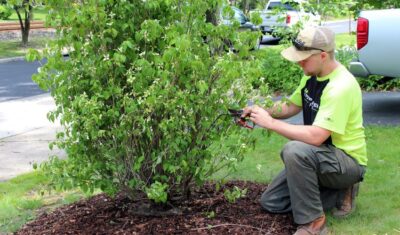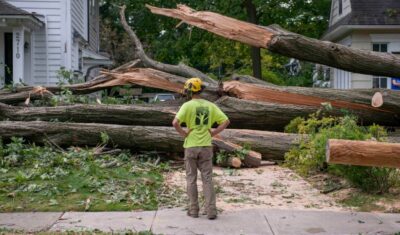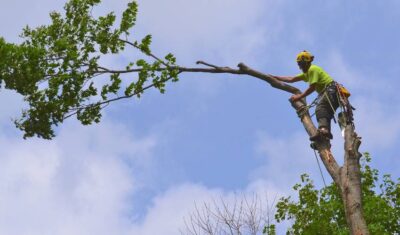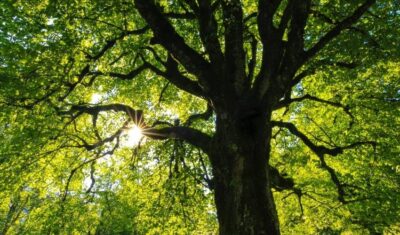If you’re noticing brown, wilted, or twisted needles on your pine trees or if your conifers are missing many of their needles, you may have a pine sawfly infestation.
While you may not notice adult pine sawflies, their larvae can be destructive to a variety of pine trees found in Ohio, especially Mugo pines.
In this article, we will show you how to spot a pine sawfly infestation, how to prevent it, and what to do if your pine trees are struggling.
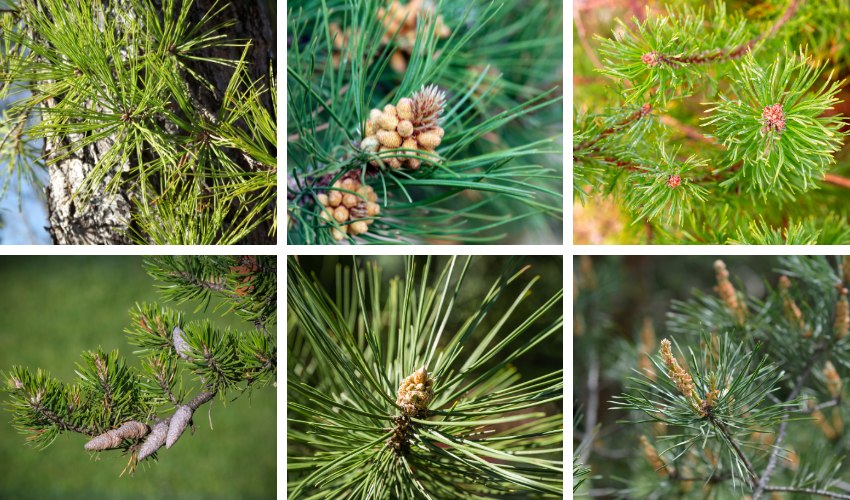
From left to right, up to down: Scotch pine, red pine, Mugo pine, Jack pine, Austrian pine, and eastern white pine
Which Trees are Impacted?
Before we go over the symptoms of an infestation, it’s important to know which trees are the hosts for sawflies.
If you have any of these trees, check them for sawflies:
- Scotch pine (Pinus banksiana)
- Red pine (Pinus resinosa)
- Mugo pine (Pinus mugo)
- Jack pine (Pinus banksiana)
- Austrian pine (Pinus Nigra)
- Eastern white pine (Pinus strobus)
Some pine sawflies have also been discovered on:
- Loblolly pine (Pinus taeda)
- Japanese red pine (Pinus densiflora)
- Pitlolly pine (Pinus rigida X taeda)
- Pitch pine (Pinus rigida)
- Shortleaf pine (Pinus echinate)
- Virginia pine (Pinus virginiana)
If sawflies run out of pine trees, they may feed on:
- Cedar (Cedrus spp.)
- Fir (Abies spp.)
If you’re not sure if you have any of these trees on your property, we recommend researching. There are even plant identification apps available. Or you can always contact Independent Tree to schedule a tree inspection!
What are Pine Sawflies?
As adults, pine sawflies resemble bees, but they do not sting. Instead, the females use their stinger-like ovipositor to slit the edge of a pine needle and deposit eggs inside.
When those eggs hatch, the larvae, which look like caterpillars, consume the needles on the pine tree.
If there is a large enough population of sawflies, they can defoliate an entire tree.
Types of Pine Sawflies
There are over 100 species of sawflies in the United States alone! Though referred to as flies or sometimes misidentified as caterpillars, they are actually part of the same order as ants and bees (Hymenoptera).
The name “sawfly” comes from something that looks like a stinger on their abdomen, a saw-like part that is used to slit plant tissue (such as coniferous needles) to insert eggs.
Here in Ohio, you are most likely to encounter these types of pine sawflies:
- European Pine Sawfly (Neodiprion sertifer)
- Introduced Pine Sawfly (Diprion similis)
- Redheaded Pine Sawfly (Neodiprion lecontei)
However, with so many varieties of sawflies found throughout the United States, this selection is not an exhaustive list.
Did you know? There is at least one type of sawfly that relies on poison ivy as a food source!
How to Recognize a Pine Sawfly
If you see something that looks like a group of caterpillars on your pine tree, wave your hand near them. If they move in response, it’s a good chance they are sawflies. Some will curl up when disturbed or may spit up liquid as a defensive method.
While caterpillars have five or fewer prolegs (false legs), sawfly larvae have six or more pairs or prolegs. Prolegs often look like knobs running the length of the larvae’s abdomen.
European Pine Sawfly
For European pine sawfly, look for caterpillar-type larvae that are a grayish-green color with a black head. They can be up to 1 inch long, and the adults are brown insects that resemble flies and are ½ inch long.
Introduced Pine Sawfly
For the introduced pine sawfly larvae, look for dark brown to black caterpillar-like larvae with two dark stripes. The underside of the larvae is yellow, and the head is a shiny black color. Young larvae will be found in groups, but older larvae will venture out by themselves in search of more needles to consume. The larvae can reach around 1 inch long. Adult introduced pine sawflies are smaller, with males ¼ inch long and females 1/3 inch.
Redheaded Pine Sawfly
Redheaded pine sawfly larvae are, at first, white with brown or black heads. The heads turn reddish and spots appear as the larvae grow. Growing to 1 inch long, redheaded pine sawflies prefer young trees. Adult females have a black abdomen, white spots, and an overall reddish-brown color. Adult males are slender and black.
According to Ohio State University, redheaded pine sawflies are some of the most damaging pine sawflies affecting trees in Ohio.
This is partly because they can go through more than one lifecycle in a season and partly because young larvae will eat the outside of needles, while the older larvae will consume the entire needle.
More than one lifecycle of redheaded pine sawfly in a growing season means that new and old foliage may be damaged or consumed. Once sawflies have eaten all of the needles, they may feed on bark tissue, killing the branches. If a tree is young or stressed, this combination of defoliation and damage to the bark can kill the tree.
When Do Sawflies Appear?
Sawfly eggs will hatch in the spring. The larvae will feed on pine tree needles from spring through summer.
In late summer or early fall, the fully-grown larvae will drop to the ground and pupate or will spin cocoons directly in the tree. The adults emerge around August or September, mate, and die after only a few days. The adults don’t feed, so they don’t cause damage to trees.
Depending on the type of sawfly, the larvae may drop to the ground and overwinter there.
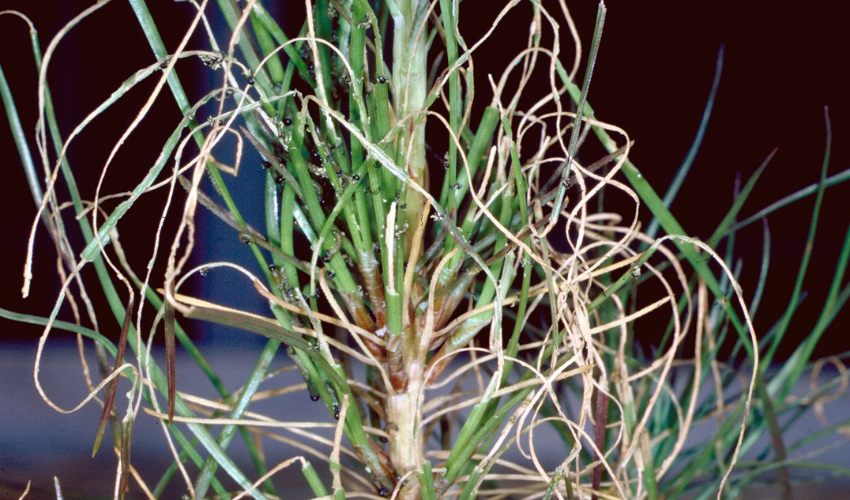
Pine needle damage by redheaded pine sawfly larvae. Image courtesy of Lacy L. Hyche, Auburn University, Bugwood.org.
What are the Signs or Symptoms of a Pine Sawfly Infestation?
- Spotted needles that contain sawfly eggs
- Sawfly damage from young sawfly larvae – look for dead, curled, brown or tan needles
- Branches missing needles
- Look for sawfly frass (excrement) below infested trees
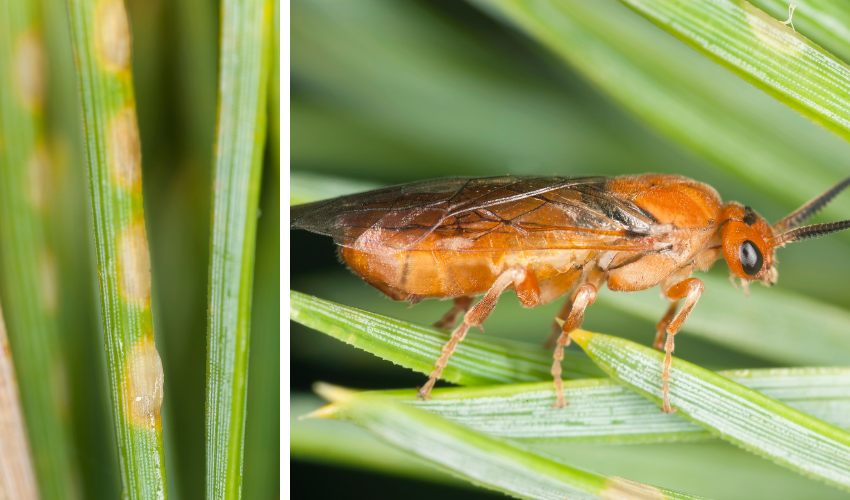
A closeup image of pine needles shows brown circles that are where sawfly eggs were inserted. On the right is an adult European pine sawfly.
How to Prevent or Treat Sawfly Infestations
The simplest way to prevent sawfly infestations is to not plant any of the types of pines associated with sawfly issues (listed at the beginning of this article).
If you do have pine trees, keep them healthy, properly fertilized, and well-watered. Pine sawflies are more likely to appear during periods of dry weather or in areas with poor soil conditions.
Check for sawfly eggs in pine needles in winter and early spring. Watch for defoliation, brown needles, or bald spots on your pine trees. If you see any needles that clearly have eggs deposited in them, remove the needles. Don’t throw them on the ground, however (the eggs can still hatch), but put them in a bag and dispose of them.
Encourage beneficial insects that work as natural predators of sawflies. There are already over 50 natural predators of sawflies, including:
- Yellowjackets
- Bald-faced hornets
- Paper wasps
- Birds (varies)
- Rodents (varies)
If you spot sawfly larvae, knock them off the tree into a bucket of soapy water, or knock them to the ground and step on them. Simple but effective!
You may choose to have infected branches professionally pruned out. Removed infected branches should be properly disposed of to prevent further infestation.
Prevent infestations by scheduling an application of horticultural oil. However, this only works for very early-season larvae. Depending on the weather and growing degree days that year, Independent Tree generally applies horticultural oil treatments from March through May or June.
If the infestation is bad, you may choose to try an insecticide that works on sawflies or remove the entire tree. Keep in mind that some insecticides may also impact the beneficial insects that are natural predators of sawflies.
Note: Though Bt (Bacillus thuringiensis) is often used to control caterpillars, sawfly larvae are not caterpillars, so it will have no effect.
Independent Tree Can Help!
Sawflies are a common issue on pine trees in Ohio, but they are not the only pest or disease that trees in our area deal with.
Thankfully, the experts at Independent Tree know and can recognize any of the issues that could potentially harm your trees and landscape.
We also have the skills, equipment, and treatment options to help you keep your trees healthy and to treat any issues that emerge.
The experts at Independent Tree can inspect your trees, suggest solutions, and provide services, including:
- Suggestions of trees to plant
- Professional pruning
- Tree removal
- Tree planting or transplanting services
- Tree pest and disease treatments
- Fertilization and soil improvement options
- And more!
Whether you suspect pine sawfly damage or are concerned that your trees are not looking as healthy as they should, contact Independent Tree to schedule an arborist assessment.
Worried about your trees’ health?
Regular maintenance and preventive plant health care are excellent ways to prevent or treat tree pests and tree disease issues.Recent Articles
Topics
About The Author

STAY IN THE LOOP
WITH OUR
LATEST UPDATES
"*" indicates required fields

